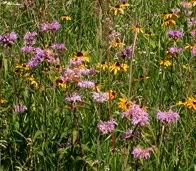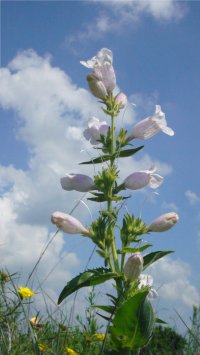Yes, native prairies and plants can save the world! Okay, I admit, help save the world. 
The basic premise: We can restore large amounts of native prairie while helping (1) solve global warming, (2) achieve energy independence, and (3) increase water availability and quality.
It is also an ecological solution: native plant and plant community restoration creates habitat for native plants, grassland birds, and other wildlife.
To the right is a draft presentation I am putting together on the subject. Just click the forward button to advance through the slideshow. I will add the pretty native plant or prairie landscape photos in the future.
Imagine if large foundations and companies got behind such a project, creating public/private partnerships that would lead to large amounts of diverse tallgrass prairie being planted for the dual purpose of biofuel and habitat restoration. I’d love to be part of that.
This could ecologically supply the large amounts of biomass that Vinod Kholsa believes will be needed for cellulosic biofuel plants (see his posts on Grist: 1, 2, 3, and 4).
If you have any feedback or suggestions, please leave a comment. Thanks!







